This past Wednesday saw the release of “Counterfeit Girl,” a collection of the 2000AD strips of the same name by Peter Milligan, Rufus Dayglo, Dom Regan, and Elle De Ville. The book is a ton of fun, and is real tour de force for Dayglo, whose artistic synergy with Regan leads to some incredibly expressive and dynamic pages. Both Dayglo and Regan have provided us with a look at six pages, from thumbnail to finished colors, complete with effects, to show how ideas become pages.
Dayglo also shared a bunch of character design pieces for the series as well. Here’s Rufus to tell us about what we’re about to see. Thanks to Dom, Rufus, and 2000AD for helping us put this together!
Rufus Dayglo: No one has seen these character design sketches before…so here ya go! Sadly they were left outta the book, which is a shame as I love that sorta stuff. Originally I was gonna make everything very Crystal-like and had her suit quite clean. Then Matt Smith (Tharg the Mighty) asked me to punk it up, so I made her suit like a Mercury NASA suit, with pipes and punky embellishments, like she was a rogue engineer. Her haircut was very much there from the get go… but her outfit and world changed hugely. I purposefully wanted it to look saturated and gaudy. I grew up in Tokyo, and I wanted it to look like Shibuya or Kowloon in Hong Kong; steamy, sweaty, and headache-inducingly bright light.
Most sci fi these days is very Ridley Scott noir, dark and colourless (which, I do love), but it is so overdone. So I thought let’s make sci fi mental again, and Dom stepped up in a hue way. His work was the perfect collaborative team for me.
First up, here are Dayglo’s designs:
Character designs:



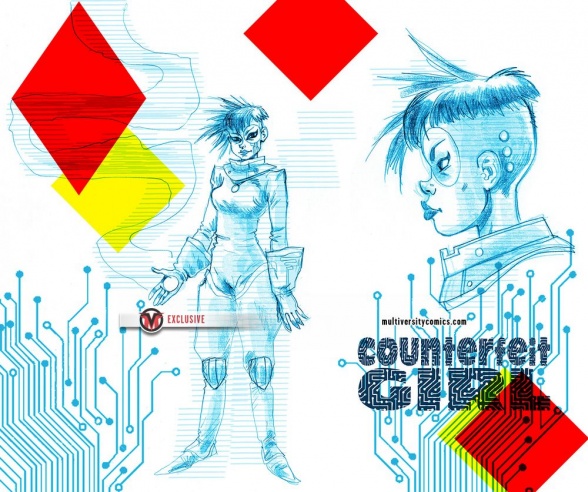



Next, we have the thumbails for these pages. Dayglo does these small sketches as he reads the script, to begin to shape the pages.

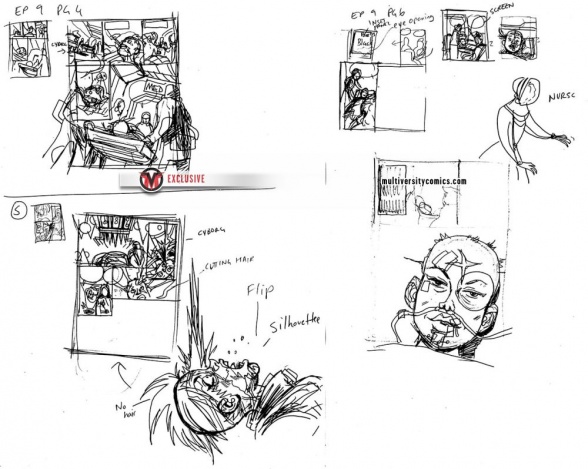
For each of these six pages, we will see five different stages of art.:
1 – Rough pages, which are essentially thumbails laid onto page templates
2 – Finished line art, which then gets sent to the colorist
3 – Color flats, the first stage of coloring
4 – Color tones, the second stage of coloring
5 – Final pages, with effects added.
Page 1:
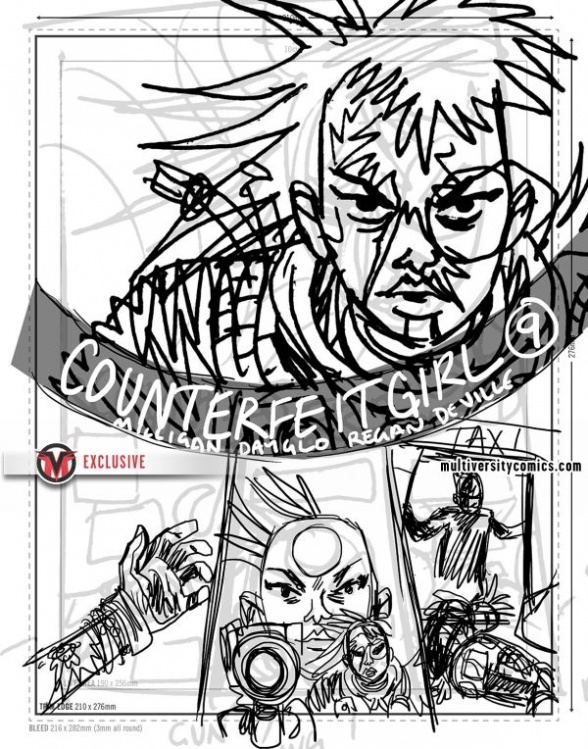

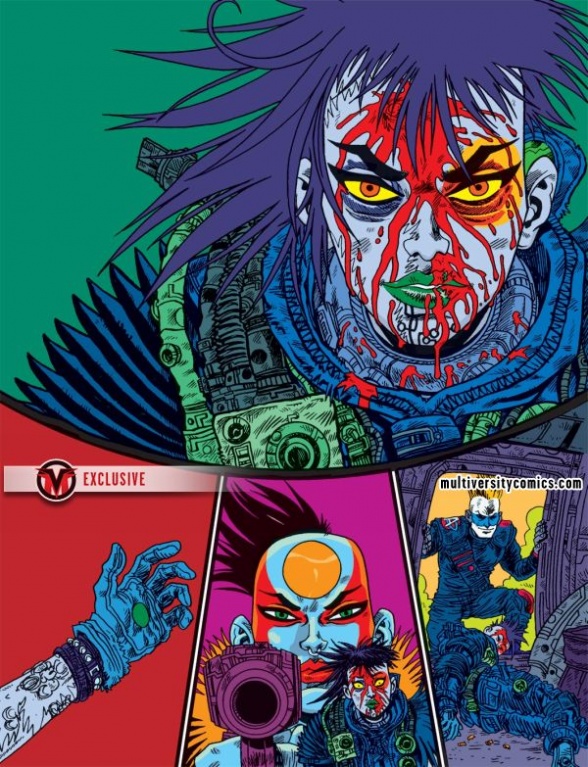

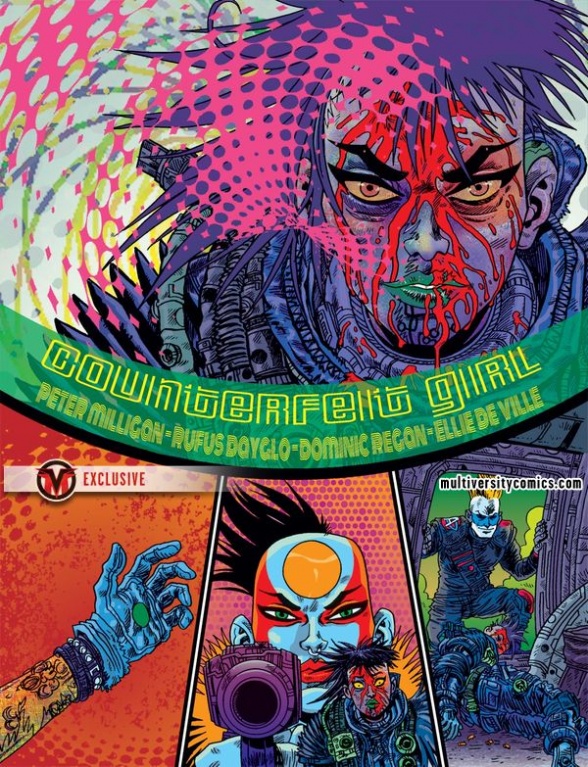
Page 2:





Page 3:


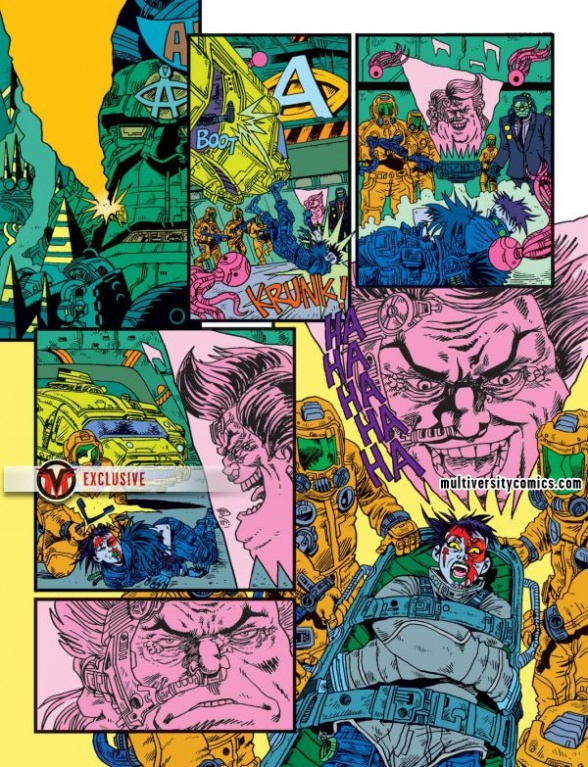


Page 4:

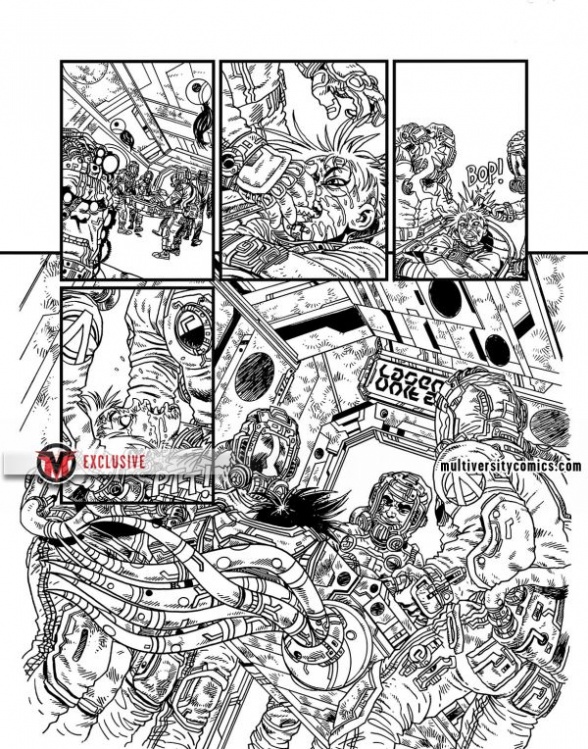



Page 5:

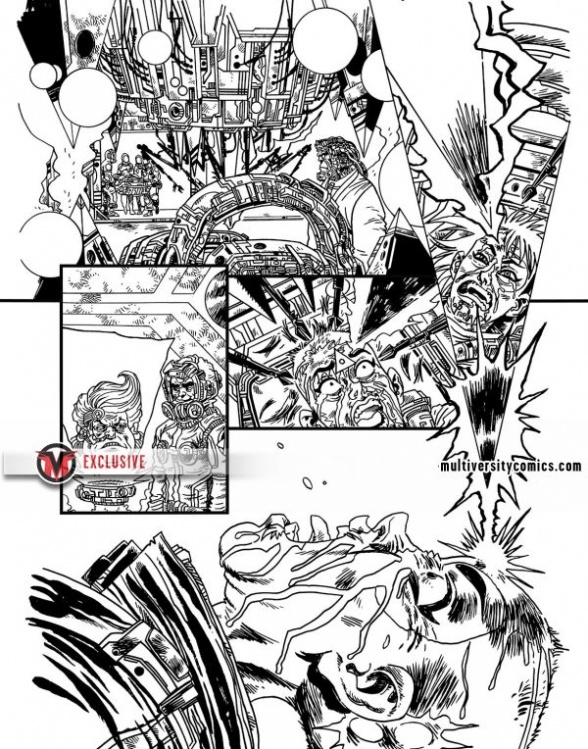
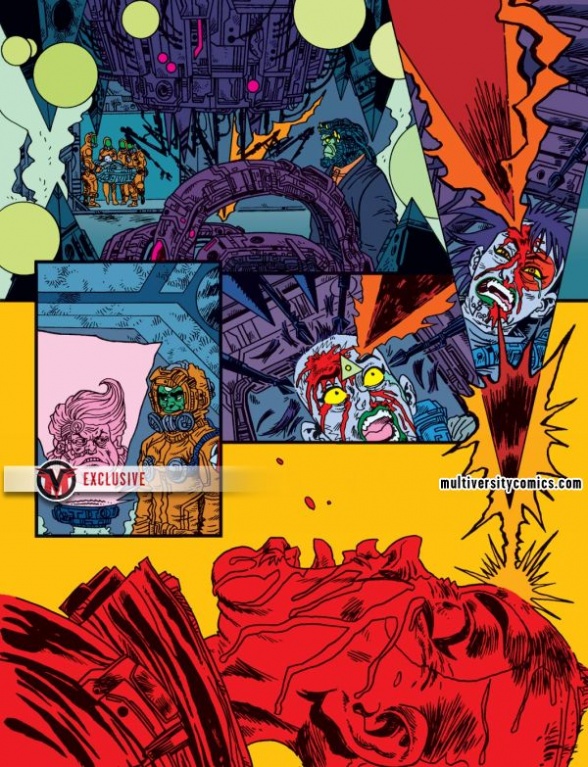
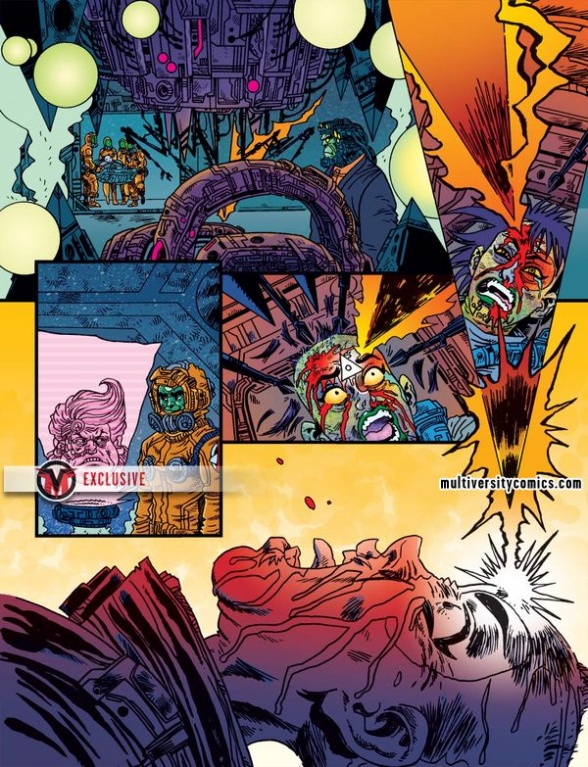
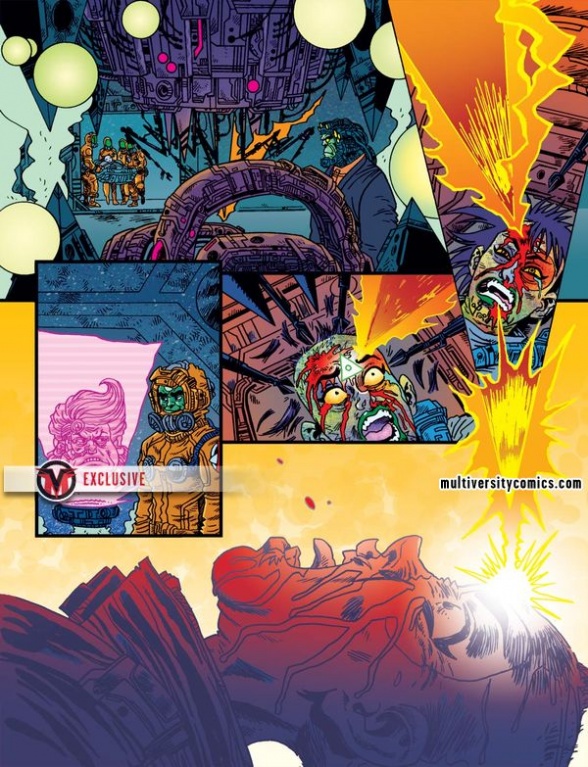
Page 6:








